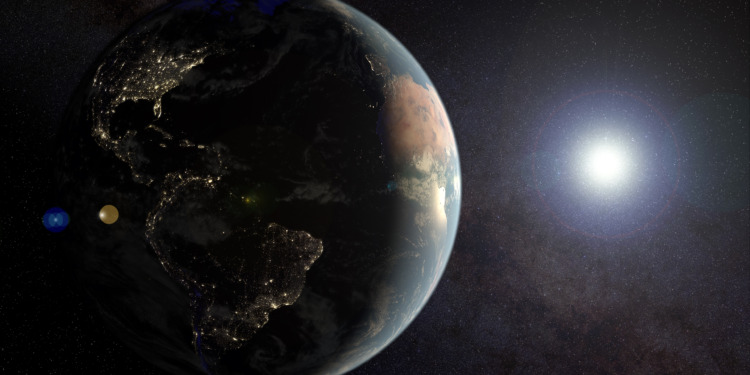WWF is calling on individuals, communities, and businesses across the world to Give an Hour for Earth and help bank as many planet-positive pledges as possible, aiming to amass seven years’ worth — mirroring the time we have left to take action to secure a nature positive world for the sake of people and planet.
The initiative is being launched to create the Biggest Hour for Earth to celebrate this year’s Earth Hour, the world’s largest grassroots environmental campaign, which sees millions of people worldwide every year celebrate the moment, serving as a powerful reminder of the importance of our planet, the need to protect it, and how little time we have to do so.
The new Hour Bank provides different options on how to pledge an hour in what WWF expects to be the biggest Earth Hour yet. Anyone can sign up and decide how to get involved during Earth Hour which is taking place at 8:30 pm local time on March 25, 2023.
 Earth Hour is the annual event that provides a collective moment of optimism to celebrate our one shared home, and raise awareness to address the dual biodiversity and climate crises the planet is facing. WWF’s bid this year is to clock over 60,000 hours — or seven years’ worth of action in just one Earth Hour — to help maintain momentum to achieve a nature-positive and people-positive world by 2030, just seven years away, and create the Biggest Hour for Earth.
Earth Hour is the annual event that provides a collective moment of optimism to celebrate our one shared home, and raise awareness to address the dual biodiversity and climate crises the planet is facing. WWF’s bid this year is to clock over 60,000 hours — or seven years’ worth of action in just one Earth Hour — to help maintain momentum to achieve a nature-positive and people-positive world by 2030, just seven years away, and create the Biggest Hour for Earth.
The Hour Bank has already received pledges from people around the world from 130 countries, including: Argentina, Suriname, Saudi Arabia, Cambodia, Bulgaria, France, Jamaica, Nepal, Romania, China and Bulgaria.
Related Articles: Why UN Climate Science Must Keep Shaping Global Climate Policy | Landmark High Seas Treaty Agreed, Ushering in New Rules for Two-Thirds of the Ocean
In line with the campaign’s historic “switch off” tagline, participants are being encouraged this year to not only switch off their lights, but also switch off from everyday distractions, and instead celebrate our one home by spending the hour reconnecting, restoring, learning or inspiring others to take care of the planet.
“Earth Hour has been one of the most successful global public-awareness building campaigns for the nature crisis over the last 17 years, with ‘switch offs’ of globally recognised landmarks from the Eiffel Tower in France, the Sydney Opera House in Australia to the Christ Statue in Brazil taking part,” explains Yves Calmette, Senior Director of Brand and Network Communications at WWF International and Global Campaign Director for Earth Hour.
“This year we want to compel millions more people to celebrate the planet and switch off in a different way, so we have launched the new Hour Bank, providing different ways to get involved in 60 minutes of global unity. 2023 must be a year of change to reach our nature-positive targets, and we need everyone to help clock as many hours as possible for the planet. Earth Hour is a collective movement that everyone can be part of,” adds Calmette.
Participants can submit their “hour for Earth” by going to: www.earthhour.org/take-part/
— —
More about Earth Hour:
Earth Hour is WWF’s flagship global environmental movement. Born in Sydney in 2007, Earth Hour has grown to become the world’s largest grassroots movement for the environment, inspiring individuals, communities, businesses and organizations in more than 190 countries and territories to take tangible environmental action. Historically, Earth Hour has focused on the climate crisis, but more recently, Earth Hour has strived to also bring the pressing issue of nature loss to the fore. The aim is to create an unstoppable movement for nature, as it did when the world came together to tackle climate change. The movement recognizes the role of individuals in creating solutions to the planet’s most pressing environmental challenges and harnesses the collective power of its millions of supporters to drive change. Visit www.earthhour.org to find out about Earth Hour events around the world. Together, let’s create the Biggest Hour for Earth.
Editor’s Note: The opinions expressed here by the authors are their own, not those of Impakter.com — In the Featured Photo: Planet Earth as seen from space. Featured Photo Credit: Miguel Román/NASA.









